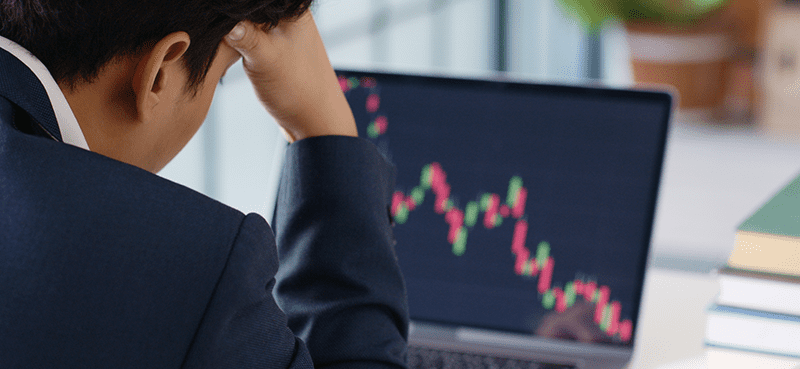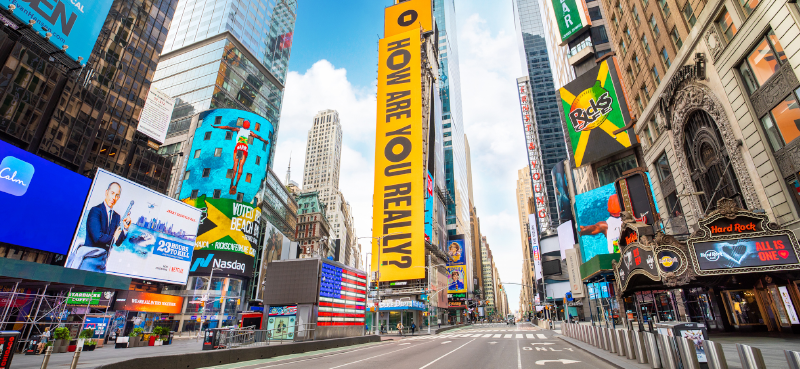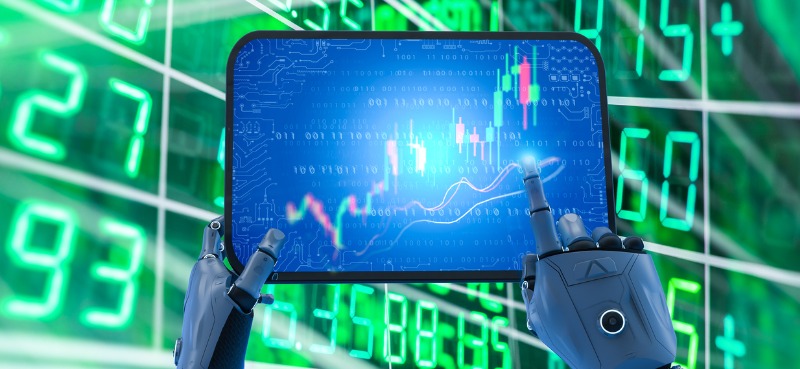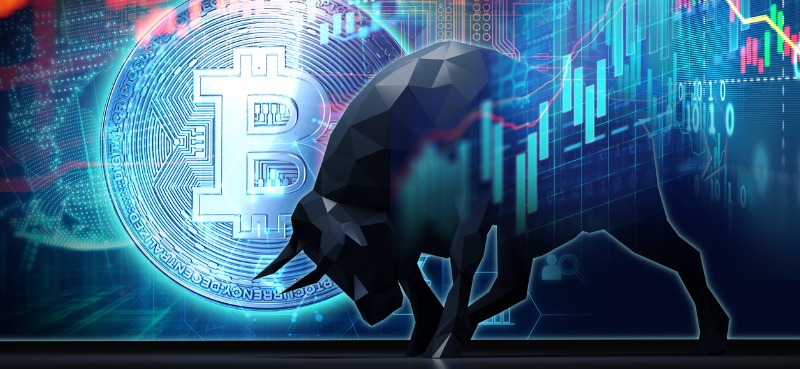I won’t sugarcoat it: The last several weeks have been sh***y for the markets. I want to be here for you, so I’m answering more questions from listeners and subscribers. (I’ll continue taking questions over the next few weeks, so if you have any, email me at frank@curzioresearch.com.)
To start, I cover the latest painful market movements—and why you need to steer clear of companies that haven’t reported earnings yet. Plus, I highlight some positive signs I’m seeing.
Then, I answer questions on whether Amazon is a buy… and how much cash you should hold in your portfolio. Plus, a listener shares how I saved him money earlier this year.
Lastly, I break down the state of the supply chain crisis for automakers—and whether any of these stocks are worth buying.
- Investors with an 18-month time horizon should be excited [2:37]
- Stay away from companies that haven’t reported earnings [5:01]
- Is Amazon a buy? [10:13]
- What should you do with your cash? [17:45]
- How I helped one listener get ahead of inflation [28:46]
- Are any automakers buys amid the supply chain crisis? [32:03]
Wall Street Unplugged | 897
Sell these stocks NOW—ahead of earnings
Announcer: Wall Street Unplugged looks beyond the regular headlines heard on mainstream financial media to bring you unscripted interviews and breaking commentary direct from Wall Street right to you on main street.
Frank Curzio: What’s going on out there? It’s Tuesday, May 24th. I’m Frank Curzio, host of the Wall Street Unplugged podcast, where I break down the headlines and tell you what’s really moving these markets. I did this last week, going to start taking more and more questions. Going to do that today and tomorrow, so send them in at frank@curzioresearch.com. That’s frank@curzioresearch.com. Okay. I’ll continue that format over the next few weeks. Just want to start taking more and more questions. I know it’s a horrible, I’ll say it, very shitty market. Eight straight down weeks. Most of your portfolios, including mine, have taken it on a chin.
Frank Curzio: And during times like this, we want to be there for you, try to help you out. We’ve seen these types of markets before. We’ve seen 1987, we seen it in 2000, 2008, and 2020, and almost every single time, those pullbacks turn out to be big buying opportunities. Almost all the time. If you look at the long-term chart of the S&P 500, since the 1950s, since we became 500 companies, I know it’s hard to see now and some people are predicting the worst, especially bears, and those PERMA bears. Just like PERMA bulls. When you have PERMA bear and the market goes down 30%, they think it’s going to go down another 60% from there. They’re never satisfied, just like PERMA bulls. Goes higher and they keep raising, raising higher, higher, higher. They never say, “Okay, that’s it.” They never flip. It’s just a state of mind that could be very, very dangerous, because you’re not changing with the times or the data. And that’s where it gets dangerous.
Frank Curzio: Right now, a lot of the risks we know, I will not cover them. You could listen to my past 50 podcasts over the past seven or eight months. I know all risks out there, but a lot of those will be priced in because we’re talking about it. Plus, an NASDAQ down 26% from its highs, the Russell S&P 500 down around 20%, meaning a lot of the negatives being priced in. And sure, we can go lower from here. It’s going to be volatile. It’s a lot of names, industry-leading companies. Over 125 of them trading below 10 times forward earnings. Average healthcare stock down over 75% from their highs. Are they all shitty? Absolutely not. Could they go lower? A little bit. The best names are going to bounce back.
Frank Curzio: Lot of great names out there trading insanely cheap valuations with good growth profiles right now that anyone with an 18-month plus time horizon should be pretty excited, should be picking away here and there. We did see a nice rally on Monday. Dow surging 600 points, NASDAQ rally 1.6%, the S&P 500 jumping 2% coming out of bear market territory, which means absolutely nothing. But it makes for a nice headline. I don’t think people feel any better being down 21% as opposed to being down 19% from the highs. It’s kind of like, “Are we in a recession or aren’t we in a recession?” Who cares? Do we need to know? Do we need to label it? You’re getting your ass kicked. People are getting their ass kicked. As the prices are coming down, somebody starts getting nailed, especially through earning season.
Frank Curzio: With that said, there’s definitely some positives. 10 years’ been holding steady under 3%. That’s great. It’s great news. Over 3% gets very, very scary. Now it’s holding, and that’s what we want to see. We want to see a top in all the negative. And inflation, we want to see that start moderating, which we’re going to see based on what Target said, what Walmart said, what a lot of these companies are saying, especially over the last month. People just stop spending. They’re not spending. Out of nowhere, out of nowhere. Got oil prices around 1.10. Yes, they’re high. Hopefully they go lower from there, but we just don’t want to see them go much higher from there either. But natural gas is still, holy, it’s still a major headwind. I mean, it popped 8% on Monday. Well over $8. I mean, that’s a major cost component for chemicals, plastics. I mean, so many different things. Fertilizer. You have no idea, no idea when it comes to natural gas. I mean, products use natural gas and that cost goes higher, and higher, and higher.
Frank Curzio: But even after yesterday’s gains, Dow Jones industrial average year-to-date down 12%. S&P 500 year-to-date down 17%. Okay, these are year-to-date, not off their highs. Russell 2000 down 20% year-to-date. NASDAQ is down 26% year-to-date. Just in May, 26% in NADSAQ. That’s an incredible, incredible move. Unbelievable. And what do we see after the close? I highlighted some positives, but what do we see with the close? Another company getting wrecked after reporting earnings on Monday, which is Snap. They bonded earnings. Projected EBITDA, you keeping score at home? Earnings Before Interest, Tax, Depreciation, Amortization. It’s a better measure than just pure earnings, and a lot of companies that are reporting losses like to use the EBITDA because it’s going to show before all the expenses, all the craziness, it’s going to be a much better number than earning sometimes. Anyway, but Snap projected EBITDA to be between zero and 50 million, right?
Frank Curzio: That’s what they said last quarter of what’s going to be, between zero and 50 million profitable. And now it says it’s going to be… I don’t mean to laugh, especially if you own a stock because it’s down 30%, but the CEO said it’s now expecting it’s going to be below the low end of this guidance. And what’s lower than zero? I just like the way he put that. That’s saying, “Hey, we’re going to lose money instead of making money.” But yeah, I guess he tried to sugarcoat it? Maybe it resulted in a couple, instead of being down 35%, you’re only down 30%? I have no idea. But Snap’s getting wrecked, along with Meta, the old Facebook, Twitter, the Trade Desk, social media advertiser companies getting nailed after this report.
Frank Curzio: And what did the CEO of snap say? He said the same thing Walmart and Target said last week. And usually companies in between earnings, they warn. They’re like, “Holy cow, this is going to be a shitty quarter. We’re going to warn and say we’re going to miss estimates,” and usually they provide estimates that they low ball. This way. They beat it when they come out the quarter. But the stock usually gets hit and get hit 10, 15% depending on what it was or what their guidance is. These companies did not warn because the downturn happened so quick. That’s what Snap said. The same thing with Walmart and Target, same exact thing. These guys didn’t get a chance until it was the last month of that quarter, and whoa, what the hell just happened? Which is saying what’s going to happen to the rest of the companies of reporting, because that’s one of the things that sucks about this market. You can go picking away. Don’t pick away at any company that hasn’t reported earnings.
Frank Curzio: I think it’s around 90 something percent have reported. There’s still not a lot, but a few big names that are reporting. Got Best Buy reporting this morning, you got discretionary names. So after the close, and I don’t want to scare the shit out of you if you own these, but Nordstrom, Urban Outfitters, Toll Brothers are reporting. Toll Brothers gives good indication on the market, and what do we see? Especially with these retailers, if they don’t meet their numbers or they report bad earnings, these things get destroyed. I mean, everybody runs to the exit. It’s not like, “Wow, this thing’s sold off too much and let’s buy it back here. It’s down 20%.” The next day, it goes down another 10%. I mean, they get annihilated. Annihilated if they don’t put up that number.
Frank Curzio: TJ Maxx put up a good number, but most of these guys aren’t putting up good numbers. Because later in a week, what do we have? Alibaba, Macy’s, Dollar Tree, Dollar General, Burlington stores. I mean, I’d be scared shit to own those in my portfolio right now. Forget about if they’re down already, or it doesn’t really matter. But if these companies come in, because most of these estimates have been lower going to the quarter, but just to see the significance of what has changed over the past month. And if these companies see any of that, where they’re going to report massive declines and it could be way off and miss estimates by a mile, you’re going to see another 20, 25% decline. So be very careful. Very, very careful. That’s the negative. That’s what sucks about this market. Because if any of these names beat, what are you going to see? Depending on what the mark conditions are that day and how much it’s up, maybe you see a 5%, 7% move higher? If they miss, 25, 30, 40% gone. Boom.
Frank Curzio: Look at target. Target’s a great company, a great name that’s gotten it done. 25%, boom in a blink of an eye. Taking that you’re safe. It’s Target. I love to go there. It’s awesome. I take my kids there. We buy stuff all the time. Where the hell did that come from? That’s what happens in a bear market, especially one that has this much leverage in it, where trillions of dollars need to come out of the system. And that’s what you’re seeing right now. You’re going to see forced selling. People being forced to sell even their good names. Maybe they’re nervous. Maybe there are margined. A lot of these hedge funds are leveraged to death. You’ll see a lot of blowouts. Probably seen them right now. That creates unbelievable buying opportunities for people who have time horizons past 12, 18 months. Again, it’s got to be ugly, but when you see the NASDAQ down 26% from its highs, look, we’re close.
Frank Curzio: There’re are positives here. But again, you have to be careful, know the markets, and don’t be all in. Don’t be all in. Not at this stage. Not time to go in. It’s time to stop picking away. I’m going to take a couple questions now and talk about that. And let’s start with a question from Rosemary. Says, “Hello, Frank. I’m a subscriber to some of your newsletters. With your help, I’m learning about fundamental analysis. I’ve specifically been looking at forward PE ratios. It shows that Amazon of recommendation in one of your portfolios has a forward PE of 128 even though the stock is trading at about 40% off its two-week high. Most analysts rate Amazon a strong buy right now. Insider trading lends well to the selling side over the last three months. Please explain to me why it has such a high buy up to price in a portfolio and such high analyst recommendations. It’s a pretty significant proportion of my portfolio, about 4%. I’m wondering if I should/if there is a good way to cover my exposure. Thanks for being there to help. Rosemary.”
Frank Curzio: So, good questions there. This is stock recommended at 900 and it went to 3,100, and before the whole entire market crashed, I mean we recommend 3,100 said it’s fantastic buy. We love the quarter. It’s significantly unperformed the rest of the FAANG names, and then it crashed along with the rest of the market, so the buy-up-to price is a little high in the portfolio. Getting to your PE of 128. Okay. Amazon is trading at 38 times 2023 earnings, not 128 times. So depending on the site, depending on the numbers, sometimes it’s, again, you look at Capital IQ and Bloomberg and systems like that, but that’s based on a $2,100 stock price and projected earnings per share of $55. That’s the Capital IQ consensus. So capital IQ, Bloomberg, much better than some of these other sites.
Frank Curzio: But those earnings are expected to surge by more than 50% annually over the next two years. What does that mean? If you look at fundamental analysis and you look at 38 times, that makes 38 times pretty cheap. I know it sounds crazy, even in this market, but you’re looking at Amazon, or say it’s a typical market. Forget about Amazon. Say it’s just a regular market that’s going up, whatever, five, seven, 8% a year. Your PE ratio, it should not be a standalone number where you compare it to whatever industry, first you should compare it to the industry, where airlines trade lower than overall average the S&P 500 and technology and biotech or technology companies trade at a high evaluation, because usually they have growth potential in them.
Frank Curzio: You have to look at that growth and that growth potential. It’s very, very important, because the company is trading it nine times forward earnings with the market trading around 16, 17 times forward earnings right now, the S&P 500. It looks cheap, but it could be very expensive based on their growth. And maybe they’re not expected to grow, while a company like Amazon trading 38 times total earnings, a lot higher in the market. If you’re looking at that growth projection, it could turn out to be cheap. And then you’d have to dig a little further if you look at fundamentals, Rosemary, because I would look at okay, is this growth sustainable? Well, if you’re an advertising company, cloud company… Cloud companies have gotten hit. But when you’re looking at Amazon and Microsoft, these are two of the biggest cloud companies on the planet, which you’re seeing the stocks impact. They’re getting impacted. You’re seeing these stocks fall and software companies, but when you’re looking at cloud as a market, I mean, you don’t going to see too much in terms of the spending impact.
Frank Curzio: It’s like when you cut down defense spending, you’re not going to cut down on drones. And that’s one of the reasons why I recommend AV/AV. We did well on it a while ago, we started on one of our portfolios on one of the large drone manufacturers, because they were cutting defense spending across the board, this is before the war. This is probably five, six years ago. And there’s certain areas that they’re not cutting. If you’re looking, companies are cutting across the board, but when it comes to cloud, they’re not, because every dollar spent on cloud services returns over $3. And that’s based on the study, it’s a three-year study by Nucleus Research. And that’s just one study. If you look at studies, most of them will say they spend a dollar and they make more money. But transitioning into the cloud, which a lot of companies still haven’t done, still very early in this trend, they actually save these companies money. It’s essential in helping to reduce cost while scaling your business, and it’s also a major part of security, which every company does business on the internet is significantly under invested in.
Frank Curzio: The same can be said of Microsoft and Amazon where they’re in the right trend, where companies are going to continue to spend money on that, so that growth trend to me is intact. If you’re looking at Amazon at this level, and that’s just cloud. That’s just cloud. I mean, everybody still goes to Amazon, one day shipping. It’s just… Smart homes. The Metaverse, VR, they’ve been getting into everything. Everything. And for me, right now, where Amazon is trading, even on a fundamental level, I mean, just based on that growth, I think it’s an absolute steal here. Again, your time horizon has to be a little forward looking, because it’s a crazy market, but if you look out, say, four years, which seems like light years. I know in today’s world, it’s like a minute. It’s holy cow, you get your message across on a minute to some person in the middle of nowhere China. But you’re looking at 2026. Analysts are projecting Amazon to generate $155 in earnings up from what 54, $55 in 2023. If that happens to be accurate, Amazon’s trading at just 13 times earnings per share. Again, you’re looking at a forward number and you look at Al’s estimates and anything could change.
Frank Curzio: But the fact, I mean, these guys aren’t in a market where consumer spending is drastically like a retail, it’s going to drastically impact spending. Yes, they have retail. Yes, they have certain goods, but Amazon sells everything. It’s not just a clothing retail that can get hurt, which you’re seeing with Nike, which you’re seeing went Under Armour and a lot of different companies warn. They have food as well. Yes, the food inflation, but people are still going to flock to those areas and Amazon still remains one of the cheapest and best ways to get your goods. So people have to shop, they have to buy things. They’re going to cut back, but they have to buy things. That part of their business is going to do fine. That’ll be okay. Cloud is a massive, massive growth market, and it’s going to continue to be a growth market for them.
Frank Curzio: Companies aren’t going to cut back on cloud. They’ll cut back on certain spending, but they’re not going to cut back on cloud. Just won’t. They’ll lose money if they do that. It just makes sense. If you’re going to spend money, that’s someplace where you want to spend it, especially during shitty times. Companies still have to spend, they still have to market, they just cut back. But that’s one of the areas you’re not going to see that much cut-back in. I don’t see it. So Amazon, I really like here. We recommended it when it was getting 900, and then we recommend… We held it for three, four years. Recommended at 3,100, it went to 3,400. So, we had a high buy up two price on it now, and now it’s come back since then and said, pulled back 30% along the rest of the NASDAQ, but strong buy here if you have a longer time horizon than 12 months. I really, really like Amazon.
Frank Curzio: Out of all the FAANG names, it didn’t participate, the FAANG name significantly outperformed. But yet, they fell just as much as every other one. I think there’s a lot left in the tank for this company. I think it’s going to significantly outperform almost every other company, maybe outside of Google, who’s cheap, and again, competitive Apple and we’re seeing it with Snap. With Apple and the private policies, that’s pushing a lot of business towards Google right now and advertising. Where companies could see the data much easier than advertising on Facebook now, or Snap, or some of these other things, which is getting limited due to private policies set by Apple. So outside of Google, Amazon, those are the two names I like the most of the FAANG names that they’re going to have tremendous, tremendous growth potential from here. And they’re both dirt cheap and like both of those names.
Frank Curzio: So, thank you so much for that question. Let’s get to the next one from Darrell. This says, “Hey Frank and team, your recent advice to build of cash in anticipating of deploying it to purchase great stocks at discounted prices.” He says, “I’ve not only been obeying trail stop losses to pay, but I’m looking at equities and a lot of them are down. For peace of mind, I have such cash available when needed.” So basically, he’s saying, “Look, I’m anticipating of deploying some of this cash because he’s obeying his trailing stop losses, and the question he has is what do you think is an adequate cash allocation currently? Going from a late 2021 cash percent of roughly 50% to one now approaching 30%.” You’re not alone, by the way. You’re not alone. That cash percentage going higher and higher, believe it or not. He says, “I won’t need my nest egg for a number of years since I’m 57, but I don’t want to stomach catastrophic losses in the meantime while I wait.”
Frank Curzio: I don’t think anybody wants to stomach catastrophic losses in the meantime while they wait. I hear you. He says, “Assuming I am representative of many of your subscribers and not ask you to answer personal investing questions, your general guidance would be appreciated and relevant to a lot of us. Thanks. Darrell.” I appreciate that, Darrell. So when I’m saying have cash on sidelines follow you stops, and I hate stopping out because you’re taking a loss. Okay, we take a loss, but you’re going to take losses in your portfolio. I don’t care how great you are. I don’t care who you are or who you follow. You’re going to take losses. You want to always limit your downside. That’s the goal of being a great investor. That’s the number one rule. Forget about the upside. Everybody’s going to tell you the greatest story in the world of the upside potential of every stock.
Frank Curzio: It’s the downside. That’s a first thing you should ask yourself when you’re buying a stock. What’s my downside? How much can I lose? Maybe you’re putting in $10,000 in a stock, where I’m going to lose it all, it’s going to be a million dollars. That’s fine, but know that. You need to understand that. Because when the market does what it’s doing right now, where it doesn’t matter what name, it doesn’t matter who’s the CEO of your company, management team, and growth profile. When everything’s getting nailed because you just have this massive sell off due to leveraging, what you want to do is limit your losses. And when you limit your losses, you’re going to take 25, 35% losses, but you know what? You’re not taking 70, 80% losses, which you might be saying, “70, 80%?” Every SPAC is almost down 70, 80%. Almost every IPO is down 78. Every IPO that was launched in the past 24 months is down close to 75, 80%. Healthcare companies, the average is down 75% from as high. All of healthcare, the average healthcare company. I’m not cherry picking biotech or… I’m talking about big, large cap biotech healthcare across the board.
Frank Curzio: 50% of the NASDAQ is down more than 50%. So, you’re looking at some of these names have gotten crushed, and what you want to do is have cash on the sidelines. Because as we saw in those time periods, I mentioned earlier. We see these sellouts, we see the pendulum swing all the way to one side. It swung all the way to one side, on the bull side for a while, where every pullback was a buying opportunity. Now the punch bowl’s gone, it’s the reverse. Now you’re looking at sell the rips. And that’s what you’re seeing almost every time the market goes up. Maybe for a day or two, a lot of selling ensues. Happens quickly. So you want to have cash on the sidelines because we are going to hit a bottom. Inflation is going to moderate. The war is going to end with Russia. You’re going to see oil prices come down back to normal as soon as we don’t get stupid with this ESG and all this garbage where we should be drilling right now. Natural gas prices are through the roof. Through the roof.
Frank Curzio: There’s so many ways to just remedy the situation of climate change and taking just unleash the oil drillers, take the profits and put it into all the alternative energy you want. But just to cut back while you have China producing coal like crazy, it just amazes me the stupidity and the agenda of people. And most of these people who have the agenda do not understand the economy. They are lawyers. That’s what our politicians are. They’re lawyers. They make laws. That’s what they do. They have no idea about the economy. They have no idea about business. They have zero business sense. That’s why every deal the government makes is absolutely shitty and horrible. There’s no accountability.
Frank Curzio: That’s the world we live in. Regardless, we are seeing an economy right now that is not doing that well. And maybe we’re in a recession. Maybe we’re not. Who cares if we are, if we’re not. We’ll feel like we are. That’s all that matters. That’s all that matters. Who cares if we see two straight quarters of negative GDP. Do we really need to see that to say, “Oh, well I’m not hurting as much.” No, no. We’re all hurting. But having cash on the sidelines is that’s how fortunes are made. That’s how the greatest investors separate themselves from everybody else. Because I see so many companies, so many newsletter places, so many people, they go out of business during times like this, they overextend, they spend too much, they get wrecked. And when they do that, it almost creates more selling.
Frank Curzio: And then you’re able to pick up some of the best names, industry leaders. I’m not talking about Russell 2000 companies. Many of them are trading at insane valuations, but not even talk about that and taking on that kind of risk. It’s about being able to buy some of the great names. During COVID, industry leaders were down 40, 50, 60%. Snap back immediately. Only took a month, month and a half before the government went wild with the trillions of spending.
Frank Curzio: What about the crisis before that, which was 2008, 2009, the credit crisis? It was over 20% of stocks in the S&P 500, and this was the March 2009 low. 20% traded below $10 a share. Even now with this selloff, you would be hard price to see just a few of those names S&P 500 trading below $10 a share. So times like this don’t happen often when you see a massive selloff, and you want to have some cash in the sidelines. And that could be in your home. Right now, I had to take out money to put a big down payment, which was needed. I had to put a 50% down payment on my new house that I’m building, but now I still have my old house that I have to live in, which is February. And that’s just about fully paid for. I’m looking to sell that house early and move to an apartment with my family, just so I could take all that cash and start putting it into the market at these levels. Because I don’t really care what happens over the next few months. What I want to do is have a lot more cash. And that’s a lot of cash for me that I could throw into the markets, and I was going to sell that house after we finally moved and moved into the other house. I’m probably going to do it now.
Frank Curzio: I know that sounds crazy. I know inflation’s running wild. I know you’re looking at the markets and you’re reading guys that are saying the world’s going to end. That’s exactly what you want to see. That means we’re close. When people are saying, “Holy shit, inflation. It’s not going to come down ever.” That’s it. It’s going to come down. It is. Especially when you see Walmart and Target. I mean, doesn’t get more consumer related than those two companies warning. That’s when you know. People are starting to close their wallets saying, “Enough is enough. I can’t afford this stuff anymore. We have to cut back.” And you’re seeing it. You’re seeing it across the board. That’s a good thing. That means companies losing pricing power. That means inflation should moderate, which the Fed has been expecting for two years. Hopefully it finally happens, and I think you’ll see it. I think you actually see it starting next month. Outside of food and energy, which we know that’s probably going to go higher over the next quarter or so, but you’re going to see prices come down. You’re going to see inflation moderate, and that’s what you need. You just need… When everything is horrible, you need the tiniest bit of catalyst to see a massive 20% move off the low, a nice 15% move in these stocks off the low that are down so much.
Frank Curzio: Stocks that went from 20 to 10, down 50%. So, 20% move might sound like a lot, but that’s still only going to 12. It was 20. That’s when you see those… When you see everything terrible or everything great, all you need to see is a little bit, just a tiny bit, especially when things are bad. When things are bad, just the littlest, the smallest catalyst. We see inflation moderating, the CPI PPI next month. We just see that a little bit. You’re going to see stocks, you’ll see a thousand point moving the Dow very, very easily.
Frank Curzio: And that’s the sign. That’s encouraging. That’s what you need. And we’re almost here. Maybe it takes another month or so. But we’re pretty close to the bottom here. And granted, I’m hoping so, since the NASDAQ’s 26% off its highs. I mean, how much further could we go? Some of these names have great, great earnings potential, strong brands, good management teams. All these names are getting wrecked unfairly, but again, we’re leveraging right now, and hopefully we’ll hit a bottom pretty soon. So when you’re looking at cash, 30 percent’s not bad, 20 percent’s not bad. There’s some of you still holding on some of your favorite names. I have a couple of names that I’m holding onto that I’m down much more than the markets. Everybody has those. But try to follow your stops. I know you stop out, and you’re pissed, and you’re like, “Shit! Curzio told me to buy this stock and it’s down 25%.”
Frank Curzio: Follow your stops. Be smart. It’s important. It’s not a perfect science, but it does protect you on the downside, which should be your number one concern at all times. Because you always want to have money to invest because there’s always going to be great ideas to invest in. And if you have no money, you can’t invest. And you don’t want to get wiped out. That’s not the goal here. The goal is to steadily go higher. You’re going to get your ass kicked every now and then, like we’re getting right now. That’s what happens, it’s to markets. Unfortunately, we got spoiled for 12 years of the Fed, low interest rates, keeping them zero, low inflation, low unemployment, everything was perfect, thinking like everything was going to be out of way forever and then COVID hit, and even before COVID we saw those cracks coming.
Frank Curzio: Saw the cracks. S&P 500 are starting to slow, earnings starting to slow, the economy’s starting to slow. Then we got COVID, injected trillions. Again, you go through these ups and downs. You want to have cash on the sidelines. Very, very important. So, it’s up to you. I can’t give you a percent. I can’t give you a number, but if you’re sitting 30% cash, that’s pretty cool right now. And your real estate is one of the markets that should be doing okay still. Very, very good, up a ton, but most assets are down a lot, giving you an opportunity where people have cash to really buy these things at dirt, cheap prices. Again, stuff like this doesn’t happen often. When you see FAANG names, the biggest trillion dollar names, the biggest names in the world fall 25, 30% in three, four months. You don’t see that ever. Now you’re seeing it. Now it’s an opportunity. It’s a good opportunity for long-term investor. Hopefully that helps. Thank you so much for that question, Darrell.
Frank Curzio: Now let’s take one more before I go. And this one’s from Matt. This goes, “Hey, Frank, you always say you like hearing from your subscriber, so here’s one for you. I just bought the house of my dreams with a 20-year-old HVAC system.” That’s pretty old. “And so November, you’re warning about higher inflation, so I made a point to purchase a whole new system before January 1st. I have a buddy who works for one of largest HVAC companies in New England, so he said they usually go up a few percent every year. Well, this year it was 12%. So thank you. Might not be a stock pick, but it saved me thousands. Now it’s being installed, and I asked my buddy if prices went up any more, and he said they did two more times. One being announced as an 18% hike.” He goes, “Holy cow, you saved me again.”
Frank Curzio: “This is something I wouldn’t have thought to do, but you again have made me smarter through your education. Awesome analysis. Hope you get a kick out of this one. Thanks again for all you do for the little guy, Matt.” I appreciate that. Look, some of the calls I’m proud of. Being able to say that inflation was coming a lot quicker than everyone else, a lot quicker than everyone else. Unless you know, you’re talking about the PERMA bears who predicted it since they were five years old. But seeing it wasn’t going to be transitory and being able to sell a couple of names, that’s all good. But I’m not a guy that takes credit, and I’m not a guy that looks and says, “Hey,” pounds my chest.
Frank Curzio: What I did, I feel like I was still wrong. I wish I could have sold a lot more stocks. I didn’t think it was going to be this bad. So I’m glad that some of it helps, but at the end, it’s the competitiveness in me that no matter how good I am in anything, I’m always going to analyze it as, “How could I get better? How could I learn more?” And for me is how could I have handled this situation better as the market came down, and not just selling out certain things and warning you and saying, “Please purchase Moneyflow Trader. It’s not for the money, but it’s the greatest newsletter ever.” And Genia, every time I look every month, she’s just logging another a hundred percent gain. Probably five or six now in the past couple months, just incredible, incredible performance. And again, I had someone say in an interview, “Well, when I listen to an interview, it’s okay and…”
Frank Curzio: I don’t care if it’s okay or not. She’s not here to, it’s not an entertaining thing. This is a money thing. Sometimes you’re going to have the entertaining guests on the podcast or going to have… This is how do I protect myself, my children from one of the biggest downturns that we’ve seen in a very, very, very long time? And that was one way to do it, but just pounding the table more on that, on those strategies, getting into energy a little bit. We did that with The Dollar Stock Club. I wish I got to more energy. But for me, I’m always looking at ways to get better. So, I appreciate that compliment. For me, look, I wish that we sold a few more stocks and you know, was able to protect ourselves a little bit more. I mean, this selloff, nobody really saw this selloff coming of this magnitude in how quick it came.
Frank Curzio: I mean, it’s pretty crazy. I mean, even with the worst inflationary environment, just the toll, the leveraging, but that doesn’t help when the Fed just complete does about-face and says, “Holy shit, we really need to aggressively raise rates immediately,” and trick our balance sheet immediately because we were so wrong for the last 12, 13 months pre-November before saying, “Okay, it’s not transitory. Holy shit. Inflation is here.” And I don’t know why we’re not seeing it moderate, but it’s probably not going to moderate for a while. We’ll see.
Frank Curzio: I will say this before I go, though, another negative is I track supply chains for a lot of different services, and supply chains are actually getting worse. They’re getting worse right now. In cars, chips, they increased projections in terms of lost units, which is lost cars because of chips. I would say that if you own Ford, GM, any car company, I would say including Tesla, but not so much Tesla, not that I would tell you to buy Tesla here. I wouldn’t. But Ford and GM are very, very, very, very, very big trouble. Very big trouble. These are companies that said, “Hey, we’re going to go all in on EVs,” and they said two years ago, three years ago that they’re going to producing tons of them right now. They’re not. They have supply chain shortages, massive ones that they kind of lied about. Not kind of. They lied about it and said, “Everything’s back to normal and getting better and better and better.” Basic statistics, I never saw it getting better. I haven’t seen it mildly, very mildly getting better a month or two out of the past 18 months, and they were saying 24 months ago that, “Hey, we’re near the end.” And based on the data and company tracked that stuff for decades, amazing services, that wasn’t the case.
Frank Curzio: Now, I’m not just saying supply chain cause everybody has supply chain issues. But here’s the problem with these car companies. They’re going all in on EVs. First of all, they don’t have the technology. Most of them don’t. They don’t have the technology. They don’t have the lithium. They don’t have the giga-factories. They don’t have any of this shit. They’re spending 20, 30, 40 billion all over the place, keep increasing that number. That’s one problem. The second problem is they’re not producing as much gas guzzling vehicles because they were going all in on EVs, so those aren’t even on a lot to sell. So, you can’t even buy those right now because supply chain issues and they don’t want to order so many because they know that… Why would you get the F-150 when the F-150 Lightning is coming out, and you just said it’s the greatest truck ever to be built? Wait just six months and you’re going to get that. So, you know what? I’m not going to purchase the F-150. I want to get the Lightning.
Frank Curzio: But now it’s been six months. Now, it’s been 12 months. Now, it’s going to be 18 months and 24 months before I could actually get this amazing EV you’ve been talking about. So, you have to be careful. And a lot of companies run into this problem. I see it all the time as CEOs who I talk to who produce products. They come out with their new generation. Whenever you come out with something new, whether it’s the iPhone in 2007, the next one that you come out with is usually better. But when you come out with the better one, you have to be careful, because you have to have enough supply. You have to be careful marketing it, because if you market it too hard, no one’s going to buy the existing inventory of the older phone unless you really significantly decrease the price, which you don’t really want to do.
Frank Curzio: I mean, there’s a big challenge coming out with new products. But when you have Ford and GM coming out with all these cars saying, “EVs, it’s the greatest thing ever! We’re going to be the biggest.” Ford’s like, “We’re going to be the biggest. We’re going to be bigger than Tesla.” Tesla has the technology. They have the giga-factories. They have the lithium. I don’t know why everybody else can get the lithium. Nobody explains that, that’s okay. We’ll learn that later on. They just tell you what’s going to happen. And every time they tell you how many cars they’re going to produce, they push it out. Six months, six months, they’ve been pushing out six months for the last two years when it comes to EVs.
Frank Curzio: But these guys are in charge. They’re not selling gas guzzling cars because people are waiting for these EVs that they were promised. They’re putting down payments of a hundred dollars on them, that’s why he’s saying even Tesla with the cyber truck, it’s booked to 2027. That’s the quickest delivery for a cyber truck. Based on how much? Go to the website, couple hundred dollars, maybe a thousand dollars you got to put down. For Rivian, it was a hundred dollars. I did as a joke and just to see how long it would take me to get their truck. And still, they’re like, “We’re raising prices. We’re doing this.” I mean, that was over a year ago. Over a year ago, I put my down payment down. Not that I’m going to buy it. I was just wanted to see this system. I think it was a hundred bucks.
Frank Curzio: But think about that. What are they selling right now, these car companies? What are they selling? They’re selling future EVs that aren’t going to be produced on scale for what, 24 months, maybe if you’re lucky? You really think if you order one of these cars, you’re going to get it within six to 12 months? Good luck. Maybe a few of you. I mean, just look around. Sometimes you got to use your common sense and look around. Have you seen any electric vehicles on the road other than Tesla? I mean, they were promised for two years now. We were going to see tons, tens of thousands, hundreds of thousands, eventually millions. How about getting five to the market first before you make those crazy predictions? That’s all I ask. But if you’re one of these companies, where are they generating revenue? I have no idea. Because Ford and GM, even right now, their sellers are expensive stocks. They’re trading based on having that Tesla multiple, which Disney tried to do, having the Netflix multiple streaming, saw that blow up in their face and it’s going to blow up in their face even more.
Frank Curzio: I think it’s funny Electronic Arts will shop itself around and talk to Disney. Disney probably said, “Holy shit, we have 40 billion of net debt on our balance sheet and we had to spend 30 billion on new content. I have no idea how we’re going to get even half the money to purchase EA, compared to Apple and Google and everybody else that was shopping it too.” I thought that was funny that they even looked at Disney. Disney purchased that stock, it would be 60, $70 right now if Disney purchased EA. It would be 60, $70. They don’t have money. They have no money. They have to raise a whole entire thing to do that. It’s crazy. But that’s what happens when you look at another industry, which Disney was forced to go into streaming. It wasn’t like this revolutionary thing. Every one of their business lines were closed during COVID, and they were like, “Holy shit, we got to do something. Let’s get to streaming.” Now it’s blowing up in your face.
Frank Curzio: Ford, GM. Look at Tesla’s multiple. Look how big the company is. A trillion. It’s bigger than the next six, seven car companies, their market cap, combined. Combined. So they’re like, “How do we get there? Let’s go all on EVs.” How you going to get supply? We don’t know. How you going to get the lithium? I don’t know. Battery technology? We’ll figure it out. Well, you didn’t figure it out yet. And now, you’re sitting there in a tough spot because nobody really wants to buy the gas guzzler. I keep calling gas guzzlers, but nobody wants to buy the gas cars, and they’re waiting for the newer versions that you sold them with the greatest cars and trucks ever, these EVs, and you can’t produce them and you’re not getting the supply to produce them.
Frank Curzio: So when those guys report, look out. I have no idea where the revenue’s coming from. Look at their lot. Just go to a GM or a four lot. Just go to them and look at how many cars are in their lots. Just look. It’s insane. They might have a few, but it’s not of their best models and stuff that you want to buy. It’s one of the crappy models that they’ll have 10, but you’ll see the empty… When have you seen empty spaces there pre-COVID? I mean, even now, you’re looking at 50, 60, 70 5% of these lots are empty. I mean, I hope they’ve figured this out. Everybody wants EVs. Everyone sees what gas prices are. Not to mention the cars are fantastic. They’re fast, they’re super-fast. They’re awesome thanks to Elon Musk. We thought they were going to be these little box cars and he said, “No, they don’t have to be box cars. Here’s what you got.” And look, the Model S is awesome. I see that the Tesla Semi that’s coming out looks awesome, the new model that’s going to be the fastest car in the world. So now, you look at the EVs and even for me, test driving a few of them, even at the Consumer Electronics Show, these are amazing cars. They’re awesome. They’re great. But getting to market, that’s another story. Hopefully that happens sooner rather than later.
Frank Curzio: So guys, that’s it for me. Again, send in those questions, frank@curzioresearch.com. I’m going to take more questions tomorrow, and I’m going to start doing them over the next couple weeks just to be there for you, ask me anything you want. I usually say about sports or this and that, whatever, but just ask me whatever you want. And I know it’s tough market conditions, but we are nearing a bottom. We could have some more downside, but there’s a lot of names that even I’m going to pick at, and I told you what I want to do. Even my house to the point where I’m moving my family and the furniture, into a rental for 3, 4, 5 months, maybe, six months by when everything’s settled to sell my house.
Frank Curzio: And another reason is the home value for my house, being in Florida, I mean, it’s insane. It’s up 20% in the last 45 days? And I mean, it’s at levels I don’t think are sustainable. So for me, I’d like to sell my house right away. Not only that, I think it’s a great opportunity to put a lot of that cash into the market. Really increase exposure. Again, just start picking away. There’s a lot of great names out there. Be patient, be careful, follow your stops, and I’m here to help you guys out to have a great day. And again, frank@curzioresearch.com. Send those questions. I’ll see you tomorrow. Take care.
Announcer: Wall Street Unplugged is produced by Curzio Research, one of the most respected financial media companies in the industry. The information presented on Wall Street Unplugged is the opinion of its host and guests. You should not base your investment decision solely on this broadcast. Remember, it’s your money and your responsibility.
Editor’s note:
Frank just went on his most controversial rant ever…
About a hidden economic force quietly eating away at your wealth (no, it’s not inflation)…
And it will continue to do so—unless you take decisive action immediately.
Go here to learn the full, uncensored truth… And exactly how to turn the tables in your favor.
























